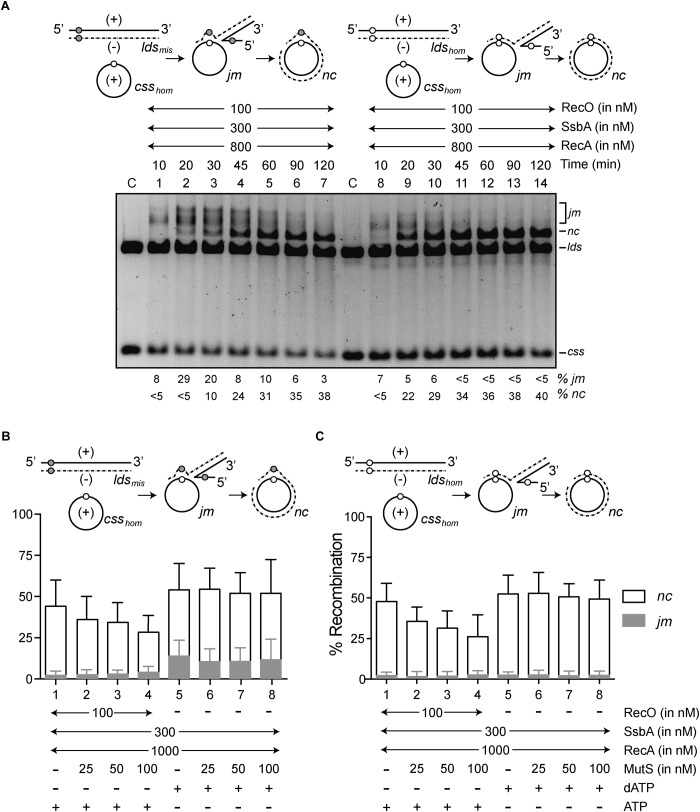FIGURE 2.
A short homeologous (77-bp segment, ∼16% sequence divergence) region on an otherwise homologous substrate (ldsmis) delays RecA⋅ATP-mediated DNA strand exchange. The scheme shows the three-strand exchange reaction between csshom (+ strand) and the homeologous ldsmis (filled circle) or ldshom (open circle) substrates. The 77-bp homeologous/homologous segment was restricted to an internal region toward the 3′ end. (A) The 3276-nt csshom DNA (10 μM in nt) was preincubated with SsbA and RecO (5 min, 37°C) in buffer A containing 5 mM ATP, followed by 3276-bp kpnI-linearized ldsmis (lanes 1–7) or ldshom DNA (lanes 8–14) and RecA, and the reaction was incubated for various times (min) at 37°C. The reaction was separated by 0.8% agarose gel electrophoresis. Band positions correspond to substrates (lds and css), intermediates (jm) and product (nc). C denotes the DNA substrates control. The amount of recombination intermediates (jm) and products (nc) are expressed as a percentage of total substrate added. MutSL affects RecA⋅ATP rather than RecA⋅dATP-mediated DNA strand exchange. (B,C) The 3,277-nt homologous circular ssDNA (csshom) was pre-incubated with SsbA and RecO (5 min, 37°C) in buffer A containing 5 mM ATP or dATP. Then, RecA and increasing MutS and the 3,276-bp ldsmis (B) or ldshom (C) DNA (20 μM in nt) substrate were added. The reaction was incubated (60 min, 37°C) and separated by 0.8% agarose gel electrophoresis. The amount of recombination products is expressed as a percentage of total substrate added. Quantification of intermediate/products beneath the gel shown as mean ± SEM of ≥3 independent experiments.

